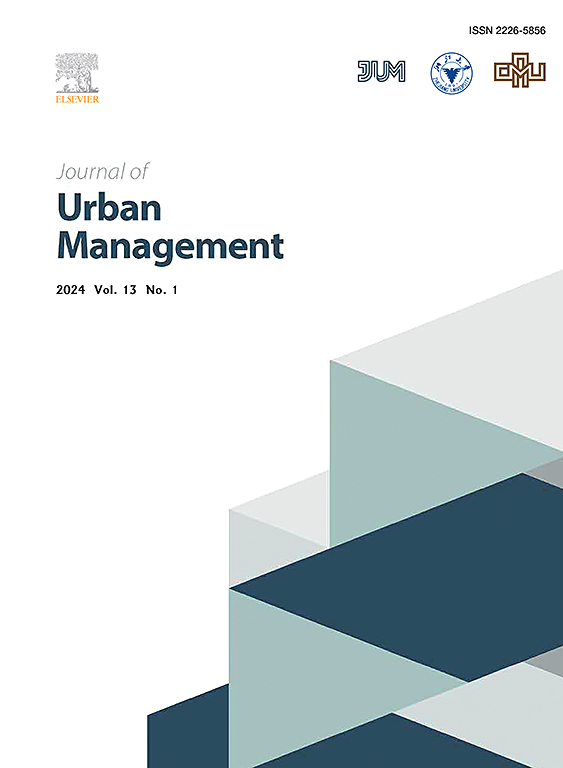决策阴影下正式和非正式参与者之间的互动:珠江三角洲城市基于社区的城市冲积洪水风险管理案例研究
IF 5
2区 社会学
Q1 URBAN STUDIES
引用次数: 0
摘要
政策制定者越来越多地将城市冲积洪水风险管理纳入多种战略,承认当地环境和相关参与者至关重要。然而,有关以社区为基础的冲积洪水风险管理的决策过程的文献很少涉及当地正式和非正式参与者之间的关系。本文从多层次治理的角度探讨了地方政府与社区居民之间的相互依存关系,有助于填补这一研究空白。本文分析了珠江三角洲城市的两个案例,以探讨中国海绵城市计划(一项城市洪涝风险管理的国家计划)中地方行动者之间的互动。通过对两个案例的比较研究,得出了四个结论。首先,地方层面的海绵城市计划可被视为多层次治理。其次,在国家政府设定的目标和地方环境的触发下,地方当局看到了将海绵城市计划融入地方综合和特定地区计划的好处,强调了机构自信的重要性。第三,在地方政府与居民的互动过程中,存在着紧张关系和协同作用,必须认识到这一点并加以利用,必要时将制约因素转化为有利因素。第四,由于缺乏对跨界合作和公众参与的支持,在海绵城市计划中,体制障碍在当地仍占主导地位。为了跨越这些界限,决策者应该更加开放,将视角从 "为人规划 "转变为 "与人规划"。本文章由计算机程序翻译,如有差异,请以英文原文为准。
Interaction between formal and informal actors in the shadow of policymaking: Case studies of community-based urban pluvial flood risk management in Pearl River Delta cities
Policymakers increasingly integrate urban pluvial flood risk management into multiple strategies, acknowledging that local contexts and the actors involved are crucial. However, the literature on the decision-making processes of community-based pluvial flood risk management sheds little light on how local formal and informal actors relate to each other. This paper contributes to filling this research gap by exploring the interdependency between local authorities and community residents from a multilevel governance perspective. Two cases, based in Pearl River Delta Cities, are analysed to explore actors' interactions locally in the Chinese Sponge City Program, a national programme for urban pluvial flood risk management. The comparative study of the two cases leads to four conclusions. First, the Sponge City Program at the local level can be viewed as multilevel governance. Second, triggered by the goal set by the national government and the local contexts, local authorities see the benefit of locally integrating the Sponge City Program into an integrated and area-specific plan, emphasizing the importance of institutional assertiveness. Third, tensions and synergies exist in the interaction process between local authorities and residents that will have to be recognized and embraced and, where necessary, converted from constraining to enabling factors. Fourth, institutional barriers still dominate locally in the Sponge City Program because of a lack of support for cross-boundary cooperation and public participation. To span these boundaries, policymakers should be more open to changing the perspective from ‘planning for people’ to ‘planning with people’.
求助全文
通过发布文献求助,成功后即可免费获取论文全文。
去求助
来源期刊

Journal of Urban Management
URBAN STUDIES-
CiteScore
9.50
自引率
4.90%
发文量
45
审稿时长
65 days
期刊介绍:
Journal of Urban Management (JUM) is the Official Journal of Zhejiang University and the Chinese Association of Urban Management, an international, peer-reviewed open access journal covering planning, administering, regulating, and governing urban complexity.
JUM has its two-fold aims set to integrate the studies across fields in urban planning and management, as well as to provide a more holistic perspective on problem solving.
1) Explore innovative management skills for taming thorny problems that arise with global urbanization
2) Provide a platform to deal with urban affairs whose solutions must be looked at from an interdisciplinary perspective.
 求助内容:
求助内容: 应助结果提醒方式:
应助结果提醒方式:


